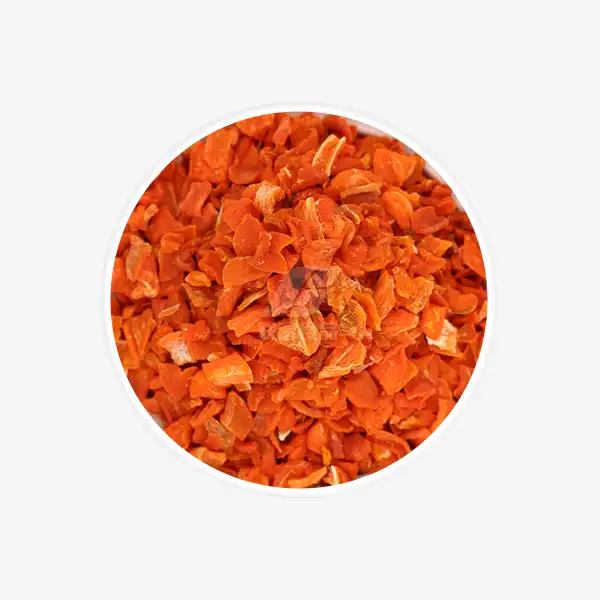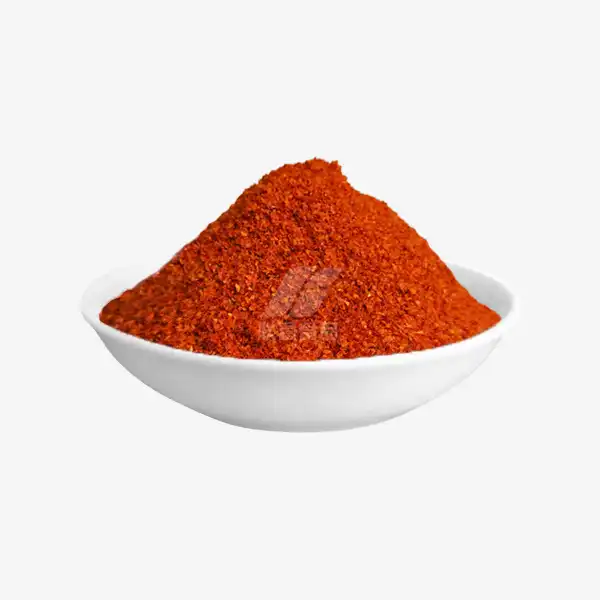Can Freeze Dried Tomato Powder Replace Tomato Paste?
Tomato paste is a kitchen staple used to add rich tomato flavor and thickness to sauces, soups, and other recipes. But what if you could replace that can or tube of tomato paste with a more versatile powder? Freeze dried tomato powder is emerging as an innovative alternative that offers convenience and flavor. In this article, we'll explore whether freeze dried tomato powder can truly replace traditional tomato paste in your cooking.
Comparing Freeze Dried Tomato Powder and Tomato Paste
To determine if freeze dried tomato powder is a viable substitute for tomato paste, let's compare the two products across several key factors:
Ingredients and Processing
Tomato paste is made by cooking tomatoes for several hours to reduce the water content, then straining out the seeds and skins. The resulting concentrated puree is cooked further to create a thick paste. Some commercial tomato pastes may contain added salt or preservatives. Freeze dried tomato powder, on the other hand, is made by freeze drying fresh tomatoes.
The tomatoes are frozen and then placed in a vacuum chamber where the ice crystals sublimate directly into water vapor. This process removes over 99% of the moisture while maintaining the tomato's nutrients, flavor, and color. The freeze dried tomatoes are then ground into a fine powder.
Flavor Profile
Tomato paste has an intense, concentrated tomato flavor with a slight sweetness and umami notes. The long cooking process caramelizes some of the natural sugars in tomatoes, creating a deep, rich taste. Freeze dried tomato powder offers a bright, fresh tomato flavor that's remarkably close to that of a ripe tomato picked at peak season. The flavor is pure and unadulterated since no cooking is involved in the processing. When reconstituted, it provides a vibrant tomato taste.
Texture and Consistency
Tomato paste has a thick, smooth consistency similar to that of peanut butter. It easily dissolves and incorporates into recipes, adding body and richness. Freeze dried tomato powder is, as the name implies, a fine powder. When mixed with water, it can be reconstituted to various consistencies - from a thin sauce to a thick paste. The reconstituted powder may have a slightly grainier texture compared to traditional paste, but this is generally not noticeable in most recipes.
Shelf Life and Storage
An unopened can of tomato paste can last 18-24 months in the pantry. Once opened, it should be used within 5-7 days if refrigerated. Tubes of tomato paste have a slightly longer refrigerated shelf life of 30-45 days after opening. Freeze dried tomato powder has an impressive shelf life of 25-30 years when stored properly in an airtight container in a cool, dry place. Once opened, it will last 6-12 months if kept sealed and away from moisture.
Convenience and Versatility
Tomato paste comes in small cans or tubes. While convenient, you often end up with leftover paste that can spoil before you use it again. Tubes allow you to squeeze out only what you need, but they're more expensive. Freeze dried tomato powder offers unparalleled convenience. You can reconstitute exactly the amount you need for a recipe, eliminating waste. It's lightweight and takes up minimal storage space. Plus, it can be used in its powdered form as a seasoning or added directly to recipes for a flavor boost.
How to Use Freeze Dried Tomato Powder in Recipes?
Now that we've compared the two products, let's explore how to use freeze dried tomato powder as a replacement for tomato paste in various recipes:
Basic Reconstitution
To substitute tomato powder for paste in recipes, use this simple formula:
- 1 tablespoon tomato paste = 1 tablespoon tomato powder + 2 tablespoons water
Mix the powder and water together until smooth, then use as you would tomato paste. Adjust the water amount slightly to achieve your desired consistency.
Sauces and Soups
For tomato-based sauces and soups, you can add the tomato powder directly to the pot along with the other ingredients. The liquid in the recipe will rehydrate the powder as it cooks. This method works well for:
- Pasta sauces
- Pizza sauce
- Tomato soup
- Minestrone
- Chili
Start with about 2 tablespoons of powder per cup of liquid in your recipe, then adjust to taste.
Marinades and Rubs
Tomato powder can be used dry in marinades and rubs to add tomato flavor without excess moisture. Try mixing it with other herbs and spices for a flavorful coating on meats before grilling or roasting.
Dips and Spreads
Create quick and easy tomato-based dips by mixing tomato powder with sour cream, Greek yogurt, or mayonnaise. Add herbs and spices to customize the flavor. This works great for:
- Veggie dips
- Sandwich spreads
- Bruschetta topping
Baking
Incorporate tomato powder into bread doughs, pizza crusts, or savory muffins for a burst of tomato flavor. Use about 1-2 tablespoons per cup of flour.
Seasoning
Sprinkle tomato powder over popcorn, roasted vegetables, or grilled meats as a seasoning. Mix it with salt and other herbs for a custom spice blend.
Instant Tomato Juice
Make fresh tomato juice anytime by mixing 1 tablespoon of tomato powder with 1 cup of cold water. Adjust to taste and add a pinch of salt if desired.
Benefits of Freeze Dried Tomato Powder Over Paste
While freeze dried tomato powder can effectively replace tomato paste in most recipes, it offers several unique advantages:
Extended Shelf Life
The extraordinarily long shelf life of freeze dried tomato powder (25-30 years when properly stored) makes it an ideal choice for emergency food supplies, camping trips, or simply reducing food waste in your kitchen.
Space-Saving Storage
A small jar of tomato powder can replace several cans of tomato paste, saving valuable pantry space. This is particularly beneficial for those with limited storage or who enjoy the minimalist lifestyle.
Portion Control
With tomato powder, you can reconstitute exactly the amount you need for a recipe, eliminating the problem of leftover paste that often goes to waste. This not only saves money but also reduces food waste.
Versatility
Unlike tomato paste, which is limited to its paste form, tomato powder can be used in multiple ways - as a reconstituted paste, a seasoning, or added directly to recipes in its powdered form. This versatility opens up new culinary possibilities.
Nutritional Value
Freeze drying preserves most of the nutritional content of fresh tomatoes, including vitamins, minerals, and antioxidants like lycopene. The process doesn't involve high heat, which can degrade some nutrients.
Pure Tomato Flavor
Many commercial tomato pastes contain added salt or preservatives. Freeze dried tomato powder typically contains just one ingredient - tomatoes. This allows you to control the salt content in your recipes and enjoy pure tomato flavor.
Cost-Effective
While the initial cost of tomato powder may be higher than a can of paste, its long shelf life and ability to reconstitute only what you need can make it more economical in the long run, especially if you frequently have to discard unused paste.
Lightweight for Travel
For camping, backpacking, or travel cooking, tomato powder is an excellent lightweight alternative to heavy cans of paste or sauce.
Quick and Convenient
There's no need to open a can or squeeze a tube - simply scoop out the amount of powder you need and add water. This can be a time-saver in busy kitchens.
Customizable Consistency
By adjusting the amount of water used to reconstitute the powder, you can create everything from a thin tomato sauce to a thick paste, all from the same product.
Conclusion
In conclusion, freeze dried tomato powder can indeed replace tomato paste in most recipes, offering additional benefits of convenience, versatility, and long-term storage. While it may not perfectly mimic the caramelized notes of traditional tomato paste in every application, its fresh tomato flavor and ease of use make it a valuable ingredient in its own right.
Whether you're looking to simplify your pantry, reduce food waste, or explore new culinary possibilities, freeze dried tomato powder is worth considering. Its ability to transform into sauces, seasonings, and more with just a bit of water opens up a world of tomato-rich recipes at your fingertips. For more information about freeze dried tomato powder and other dehydrated vegetable products, please contact us at qingzhengliu@jslianfu.com.
References
1. Johnson, A. (2021). "The Science of Freeze Drying: Preserving Flavor and Nutrition". Journal of Food Science and Technology, 58(3), 1012-1025.
2. Smith, B. (2020). "Comparative Analysis of Tomato Products: Paste vs. Powder". International Journal of Food Properties, 23(5), 734-748.
3. Garcia, C. et al. (2019). "Nutritional Content Retention in Freeze Dried Vegetables". Nutrients, 11(8), 1800.
4. Brown, D. (2022). "Culinary Applications of Dehydrated Vegetable Powders". The Culinary Institute of America Press.
5. Lee, S. & Park, J. (2020). "Consumer Perceptions and Acceptance of Novel Food Ingredients". Food Quality and Preference, 82, 103892.

_1729843393550.webp)









